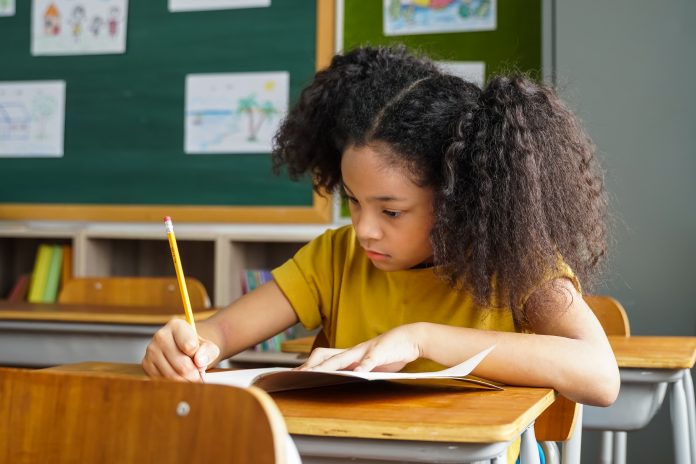A new study shows that Illinois continues to pump money into education without seeing tangible results.
The Reason Foundation found that Illinois’ inflation-adjusted education revenue grew from just over $13,000 per K-12 student in 2002 to over $20,000 per student in 2020, a growth rate that ranked third highest in the U.S.
“A lot of it is driven by teacher pension debt and Illinois is a pretty good example of this trend,” said Aaron Smith, director of Education Reform and co-author of the study. “During the time period we examined, their per student spending on benefits went up nearly 200%.”
That ranks Illinois second in the country, going from $2,024 per student in benefits spending to $6,062 per student. In 2020, Illinois had $22.56 billion in total education debt, up $2,934 per student in real terms since 2002.
Despite the increase in spending, the study found that between 2002 and 2020, Illinois’ total student population declined by about 6%. At the same time, the number of teachers increased by 2.5%. During that time, U.S. public school enrollment increased by 6.6% while total staff grew by 13.2%.
During this time, Illinois’ eighth grade reading scores decreased by two points, ranking 29th in the country.
“One of our findings was that there isn’t a consistent relationship between funding growth and student outcomes,” Smith said.
The report notes that the trends indicate that further statewide investments in public education don’t necessarily lead to increased student achievement on standardized tests. Factors beyond overall per-student spending can lead to performance gains in states with low spending growth and can hold achievement flat in states with high spending growth.
Gov. J.B. Pritzker said he would like to spend more on education than what he has proposed in his budget.
“Really we are putting more than a half billion dollars into K-12 education in the state each year,” Pritzker said.
Spending for K-12 education will increase by about $450 million in Pritzker’s budget proposal, including money for transportation and special education grants, a state literacy program and a teacher vacancy pilot program. The total amount of spending for K-12 in Illinois would be $10.8 billion in state taxpayer funds if the governor’s $52.7 billion budget is approved.
State Reps. Dan Ugaste, R-Geneva, and Tim Ozinga, R-Mokena, recently introduced a plan that would increase the amount of money the state spends each year on education while requiring property tax relief to residents and businesses across the entire state. House Bill 4866 would create the Education Property Tax Relief Fund as a special fund in the state treasury for the purpose of the state paying more for education. The plan would tie pension costs and property tax relief into a certain percentage of each year’s state budget. They said once fully implemented, some school districts with the greatest need could see a 50% reduction in their property tax levy.
“The state must act on providing more funding for school districts in Illinois,” said Ugaste. “Our plan provides for the state to pay more for education, property tax relief for all, and greater opportunity for growth, especially where it is needed most.”
Originally published by The Center Square. Republished with permission.
For more great content from School Reform News.
For more from The Heartland Institute.








